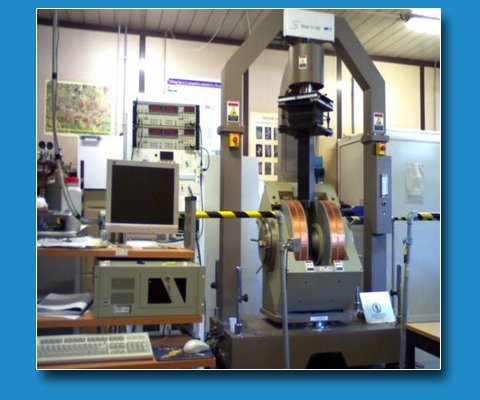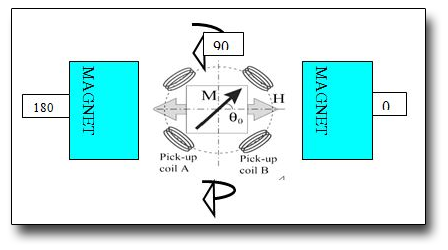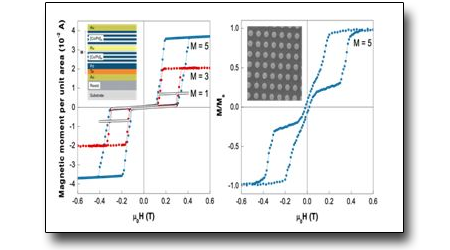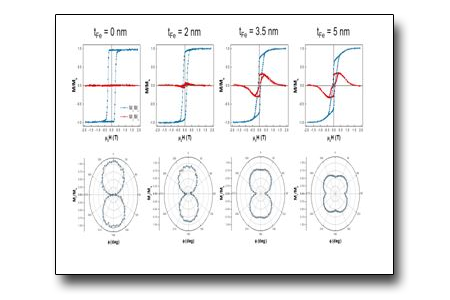
MicroSense Model 10 VSM Vector Magnetometer
Alberto M.Testa -
Gaspare Varvaro -
Nanostrctured Magnetic Materials Laboratory (nM2-Lab)

TECHNICAL SPECIFICATIONS
- Conventional electromagnet with Hmax = 2 T (70mm pole gap; 2 Tons weight) with field resolution of 1 mOe
- operating range 80 T < T < 770K
- AUTOMATIC Magnet ROTATION system
- Range: ± 540º (field plane);
- Resolution: 0.0005º
- Accuracy and repeatability: ±0.2º
VECTOR COILS
- 8 sense coils, forming 4 pairs of two coils each, for simultaneous detection of X and Y vector components of the magnetic moment
- Accuracy of vector length and angle: ±1.5% ±1.5 º
- Sensitivity emu in magnetic moment : 5 *10-6 emu
- Continuous temperature range from 80K to 770 K without changing hardware
- A computer workstation running a LabView control software allows the operator to calibrate the system, control the VSM operation for a full data collection and analysis.
AVAILABLE TECHNIQUES
The VSM control software supports a number of different measurement protocols to evaluate primary magnetic properties (e.g. Ms, Hc, Kan, TC) and for advanced studies on inter-particle (grain) interactions, magnetization reversal mechanism and magnetic anisotropy symmetry.
- Field-dependent Magnetization Loops
- Remanence Measurements
- Direct Current Demagnetizing Curves (DCD)
- isothermal Remanent Measurements (IRM)
- δM plot/Henkel Plot
- First Order Reversal Curves (FORCs)
- Angular Magnetic Measurements
- DC-Transverse Measurements
- Time-dependent Magnetization Measurements
A Magnetoresistance 4-point probe is available for resistances (between 1 and 10 kΩ) measurementsvs vs magnetic field, with a resolution better than 0.01% full scale and a reference current user settable between 0 and ±20 mA
SAMPLES
- shape and size : disks (5<ϕ<8 mm in diam for thin films); cilynder (12 mm height/3 mm diameter for liquids) 4 mm height/8mm for powders (up to 10mg in weight)
Average time duration for an hysteresis loop is approx. 30 min
USE FOR
- Magnetic thin films and heterostructures
- Magnetic nanoparticles
- Magnetic nanoarchitectures
- Hybrid magnetic nanocomposites
- Fundamental studies on materials of applicative interest (energy, biomedicine, sensors, environment, information storage, ICT and cultural heritage)
CASE STUDY
Co/Pd-based synthetic antiferromagnets for biomedical applications.e
Co/Pd-based synthetic antiferromagnets for biomedical applications.
Magnetic properties of thin film stacks and microdisks consisting of multiple repeats M of synthetic antiferromagnetic [Co/Pd]N/Ru/[Co/Pd]N units with perpendicular magnetic anisotropy were systematically investigated. For M ≤ 5, the samples fulfill all the key criteria mandatory for biomedical applications (i.e., zero remanence, uniaxial magnetic anisotropy, zero field susceptibility at small fields and sharp switching to saturation) together with the ability to vary the total magnetic moment at saturation by changing the number of repetitions of the multi-stack.
G. Varvaro et al. Nanoscale 11, 21891 (2019)


Magnetization reversal mechanism in perpendicular exchange-coupled Fe/L10-FePt bilayers.
The magnetization reversal mechanism in perpendicular soft/hard Fe/FePt exchange-coupled bilayers was investigated as a function of the soft layer thickness (2, 3, 5 nm) by combining angular and DC transverse magnetic measurements, magnetic domain analysis by magnetic force microscopy and numerical micromagnetic simulations. For a soft layer thickness smaller than the FePt exchange length (~ 2 nm) the system behaves as a rigid magnet. For larger thicknesses, the magnetization reversal process starts with the rotation of the Fe moments towards the film plane as indicated by the increase of transverse My signal while the external field is sweeping from the value at saturation to zero.
G. Varvaro et al New Journ.of Physics 14(2012) 073008

 English (UK)
English (UK)  Italiano (Italia)
Italiano (Italia)